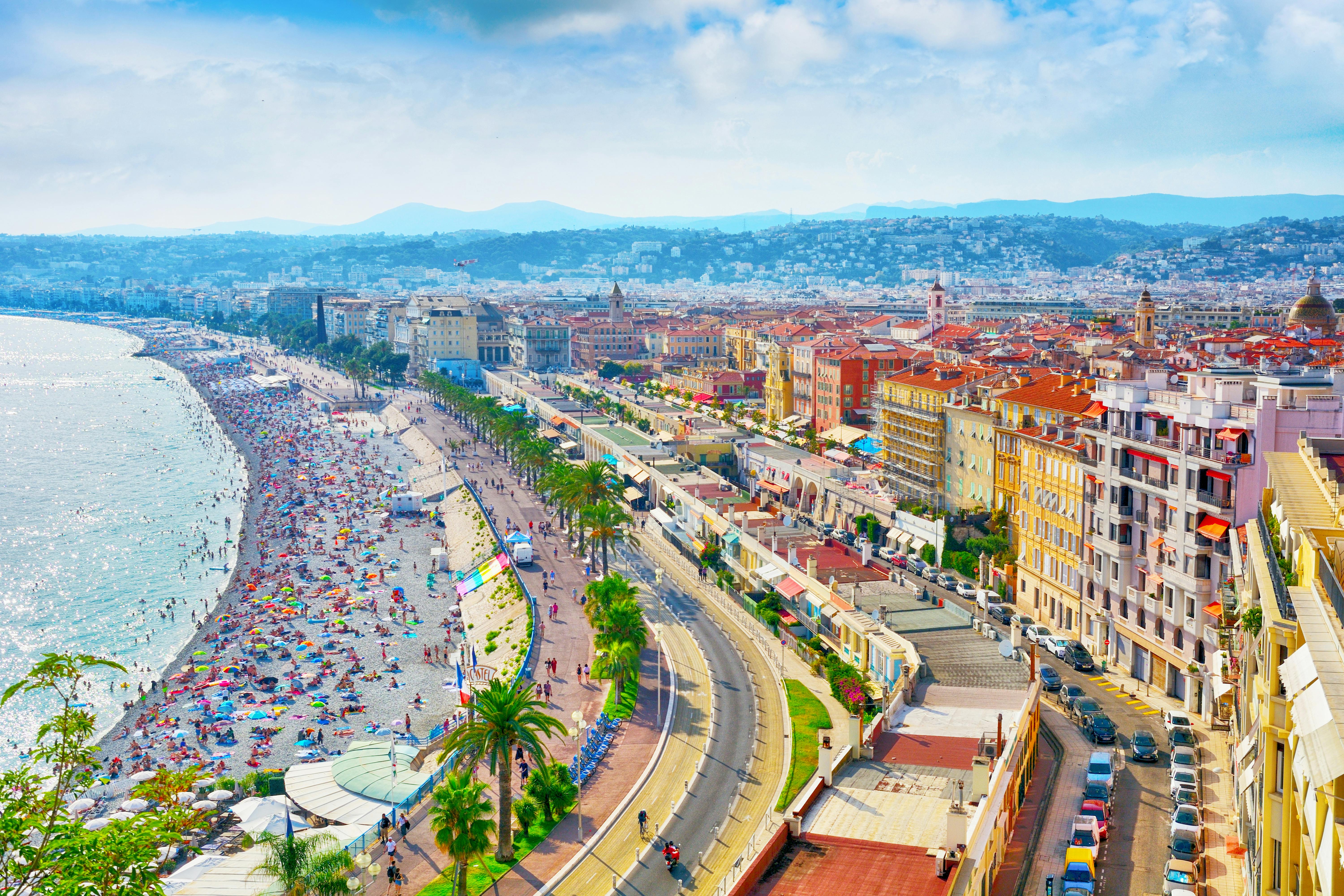France’s Nice, Then as Now, Remains a Work of Art
Of all the sunlit cities on France’s fabled Côte d’Azur, Nice is the one that epitomizes for me the region’s sensual, artful allure. Nice captivated me from my first day here more than four decades ago on a year-long post-college ramble through Europe.
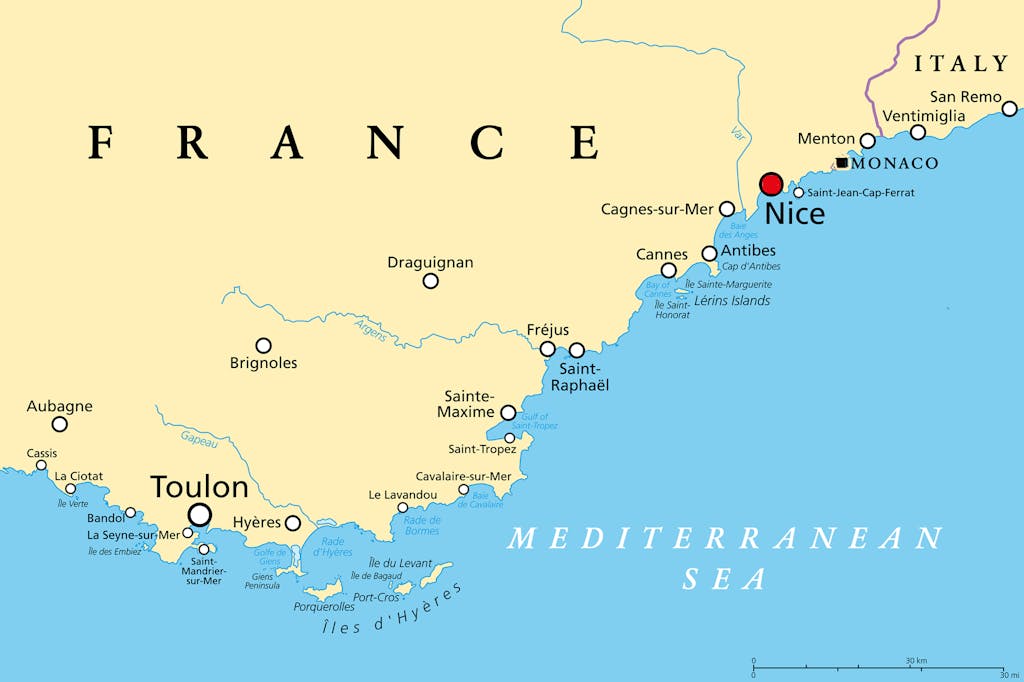
To begin that day, I ventured to the bustling Cours Saleya, a centuries-old square in Old Nice, where I had a café crème and a croissant at Le Long Cours, a café that looked right onto stalls selling a collage of flowers, fruits and vegetables.
As I sipped and scribbled in my journal, elegant older women with well-coiffed dogs smelled melons and eyed glistening red and yellow peppers.
Three breezy, baguette-bearing women in floppy T-shirts and espadrilles bought pears and peonies; housemakers in sun hats and long-sleeved dresses stuffed garlic, grapes and guavas into woven baskets.
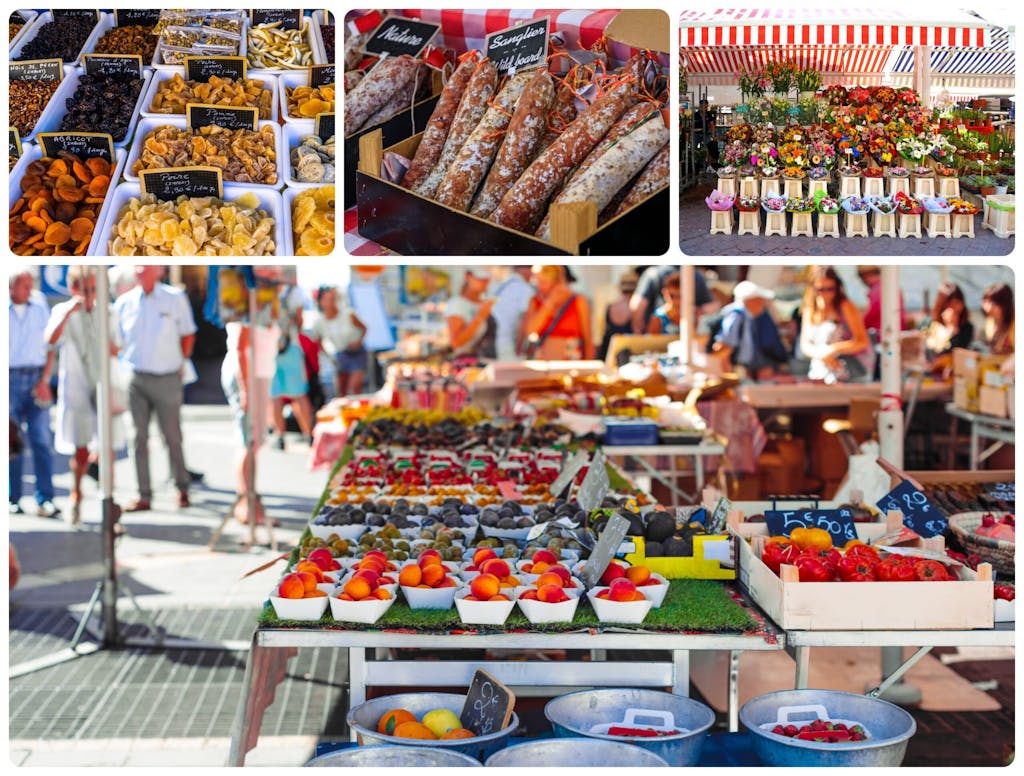
“Bonjour!” and “Merci!” pealed through the morning air, past the graceful shutters and grillwork balconies on the salmon-, peach- and wheat-colored apartments that overlooked the stony square.
“This is France!” I noted in my journal.
The charm remains, 40 years on
The city enchanted me again on my visit last summer. I spent the morning exploring the winding alleys, imaginative shops and intimate eateries in Old Nice. For lunch I stopped at À L’Écurie, one of many small sidewalk places dotted with bright umbrellas, and I ordered Salade Niçoise, the renowned local specialty of tomatoes, anchovies, radishes, olives, artichoke hearts, cucumbers, green beans, hard-boiled egg, tuna and a few lettuce leaves.
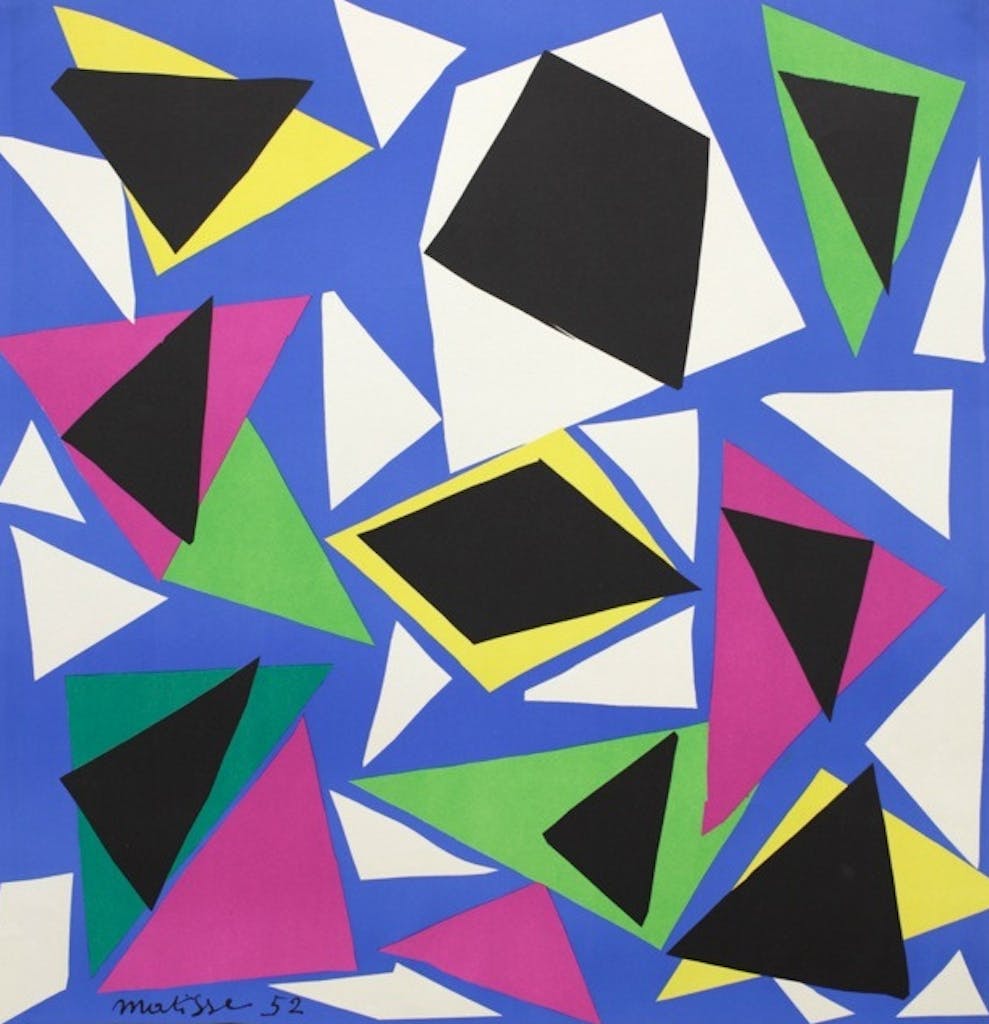
After lunch I visited the Musée Matisse, set in a handsome 17th-century Italian-style villa in the hillside neighborhood known as Cimiez, not far from the artist’s last residence in Nice. The museum’s intimate collection – 68 paintings and gouache (thicker than watercolor and also opaque) cut-outs (pictured at left), 236 drawings, 218 engravings and 57 sculptures – offered some large-scale illuminations. I was captivated by a display that presented a small canvas titled “Tiny Pianist, Blue Dress, Red Background,” and beside it, the red cloth backdrop and easy chair Matisse used as props in the painting. One could see just how the artist appropriated and rendered these to suit his creation.
A series of sketches for the mural “The Dance” illuminated Matisse’s painstaking efforts in the creation of that monumental masterpiece, and in a specially designed room, models for the Chapelle du Rosaire in nearby Vence, France, illustrated the extraordinary attention to light and line that makes the nearby chapel a luminous triumph. I also admired a pairing of sketched nudes, the top one from 1950 and the bottom one from 1924, whose differences in composition, stroke and goal embodied Matisse’s evolution from naturalism to an abstractionism designed to present essences and effects rather than appearances.
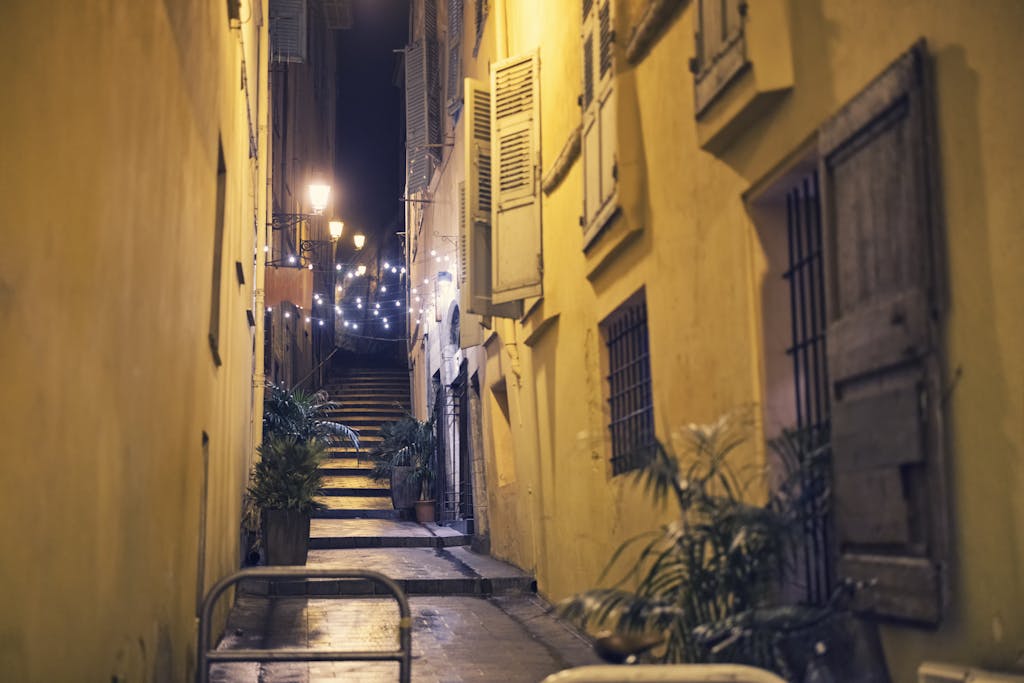
For dinner I returned to the alleys of Old Nice and waited in a line at Nissa Socca, a four-table hole-in-the-wall that a worldly friend had told me served the city’s best nissa socca, a grainy, olive oil-flavored flatbread made with chickpeas. Accompanied by a green salad and a great house rosé, this simple feast confirmed for me the notion that quotidian life in Nice is an ongoing celebration. A sudden presence of sidewalk musicians serenaded my nissa socca by strumming stringy guitars and singing in even stringier voices.
After dinner I wandered to the grand seaside Promenade des Anglais (pictured in photo at top of page). The boulevard was alive with lamplight from restaurants and clubs that spilled onto the sidewalk, streetlights that suffused the palm trees and neon that etched the sky. The air was moist and warm, the palm trees rustled, and the whole city seemed to be out in an embrace of the night.
I sat on a bench, took out my journal, and wrote: “Kids rattle by on skateboards; teenagers smoke and joke and simulate the French version of cool; American parents push strollers and exclaim at the softness of the air; young couples kiss in passionate oblivion, and silver-haired couples stroll hand-in-hand, lost – or rather found – in their own reveries.”
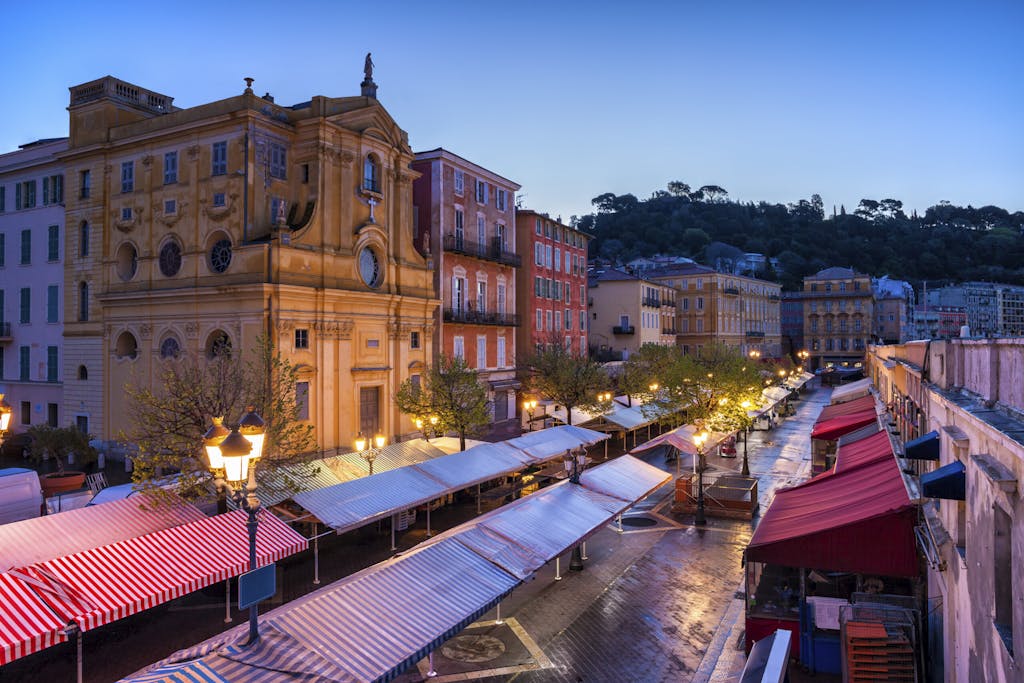
I didn’t want the night to end, so I headed again to the Cours Saleya. The scene was vibrant, the square crammed with tiny tables showered with light from the surrounding cafes, and resonating with excited conversation and leisurely laughter – the music of people with no morning duties or deadlines, wrapped in the endless enjoyment of the moment.
I installed myself at a far table, ordered a demi-carafe of the house rosé, and surveyed the happy scene. The air oozed sensuality, the wine and the lamplight, the caressing air and the laughing, lilting people in T-shirts and sandals, shorts and short dresses. I sighed, and something inside me opened, like a flower blooming.
“Already the Côte d’Azur is casting its spell!” I wrote in my journal.
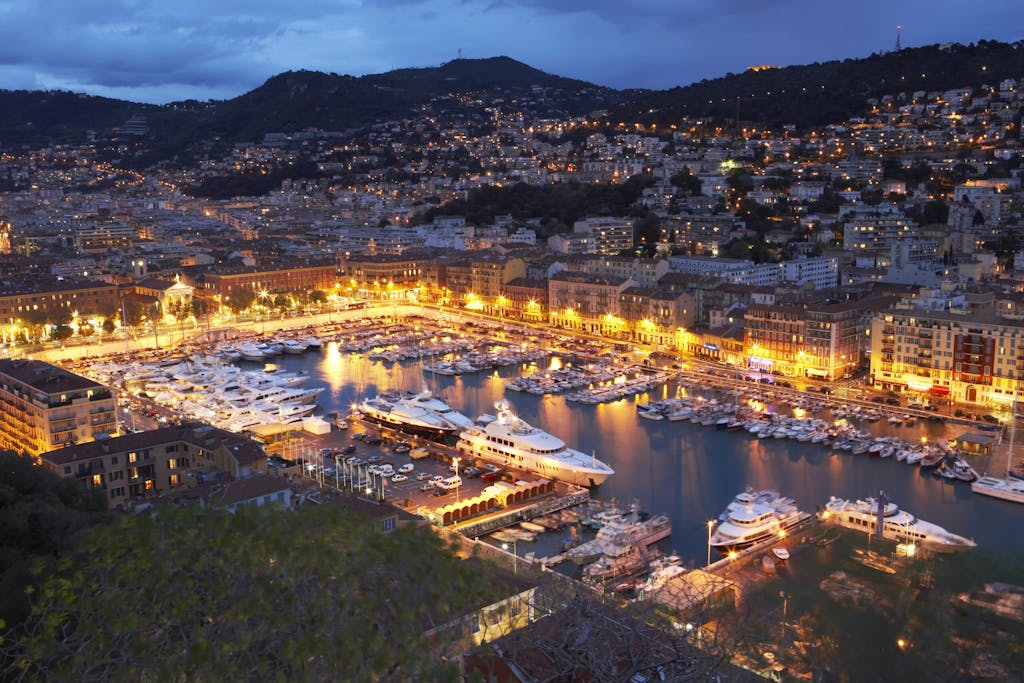
“This sumptuous, sensuous, languorous light seduces as it illuminates, revealing all the deepest colors and corners of country and city even as it wraps you under its spell.”
I thought of that young man who had sat at a table in this very square, scribbling in his journal 40 years before, and contemplated the time-bridging magic of this special place:
“The Côte is moonlight and sunlight,” I wrote, “cascading over roof tiles and palm trees and grillwork balconies and cafe umbrellas like a waterfall, glinting off the shimmering Mediterranean, painting mountaintops and hillsides, cobblestone squares and pebbly beaches like an artist’s brush.
“This is the light that seduced Matisse and Paul Van Gogh, Marc Chagall and Auguste Renoir, Jean Cocteau and Fernand Léger – and many other artists and writers, including Cole Porter and F. Scott Fitzgerald, Pablo Picasso and Françoise Sagan.
“It is the galvanizing element in the mix of hillside and sea, herb and bloom, art and architecture, craft and cuisine that makes the Côte d’Azur one of the most enchanted and enchanting places on the planet, a land where soul and sense are celebrated, and where the layers of artistic inspiration and sensual sanctification fertilize the ground and enrich the very air.”
I took another sip, surveyed the scene one more time, and recalled the words I had penned at the end of my first stay in this cherished place:
“I don’t know where my life-path is leading, but one thing is crystal clear: In some deep, deep sense, I will always return here.”
